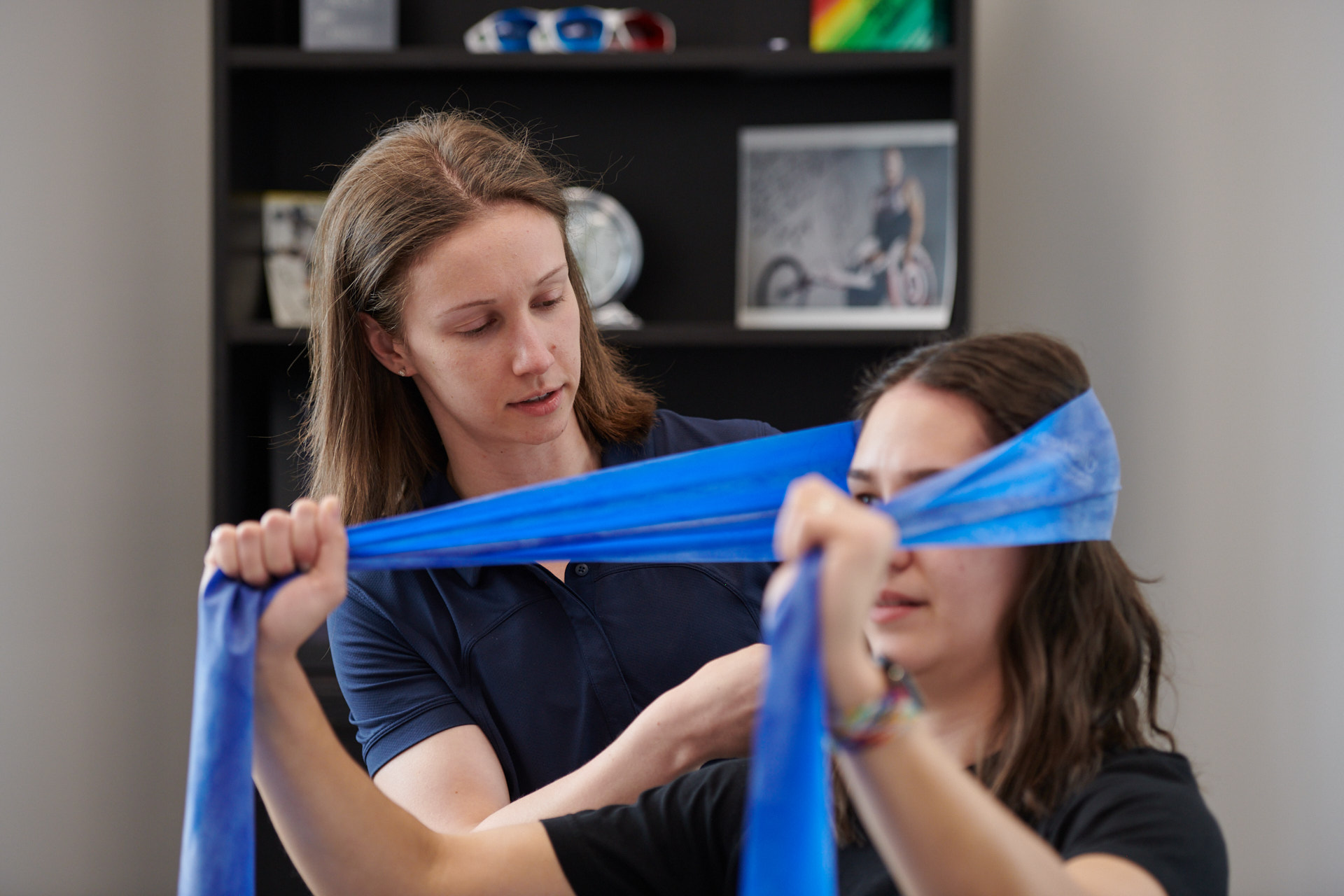Learn about concussions, including non-impact causes, symptoms, and treatment. Get informed on prevention and read more to protect your health.

A sudden stop in traffic. A jarring fall on the ice. A forceful tackle on the field. These incidents, while seemingly different, share a common potential consequence: a concussion. But can you get a concussion without hitting your head directly? The answer is a definite yes, and understanding this reality is crucial for protecting your brain health. This article explores the often-misunderstood world of non-impact concussions, where rapid head movements, rather than direct blows, cause the brain to move within the skull. We’ll debunk common myths, delve into the science behind these injuries, and provide actionable steps for recognizing symptoms, seeking treatment, and preventing future occurrences. Join us as we empower you with the knowledge to protect yourself and your loved ones from the often-invisible dangers of non-impact concussions.
Key Takeaways
- Concussions aren’t always from direct head impacts: A forceful movement or jolt can cause the brain to move inside the skull, resulting in a concussion even without hitting your head. This can happen in car accidents, sports, falls, and other unexpected situations.
- Know the diverse symptoms: Concussions can present with various physical symptoms like dizziness and nausea, cognitive changes such as memory problems and confusion, and emotional shifts like irritability or anxiety. Recognizing these signs, regardless of how the injury occurred, is crucial for proper care.
- Seek medical attention promptly: If you suspect a concussion, even if your symptoms seem mild, see a healthcare professional immediately. Early diagnosis and treatment are vital for a smooth recovery and minimizing potential long-term issues. Don’t hesitate to get checked out – it’s always better to be safe.
What Is a Concussion?
This section clarifies what a concussion is and debunks common misunderstandings surrounding this often-invisible injury. Understanding the basics is the first step toward protecting yourself and your loved ones.
Defining Concussions
A concussion is a mild traumatic brain injury (TBI) that temporarily disrupts brain function. It’s a common injury affecting people of all ages and activity levels. As the Mayo Clinic explains, a concussion affects how your brain works. Think of it as a sudden jolt or shaking of the brain inside the skull. This movement can stretch and temporarily alter brain cells function, leading to various symptoms. Importantly, concussions can result from impacts to other parts of the body, not just direct blows to the head, as highlighted by ProCare Medical Center. This means you can sustain a concussion even if you haven’t directly hit your head. For more information on early steps and strategies after a concussion, visit our resource: What should I do after a concussion.
Common Concussion Misconceptions
Several myths surround concussions, often leading to delayed diagnosis and treatment. One widespread misconception is that you must lose consciousness to have a concussion. This isn’t true. Cognitive FX points out that most concussions don’t involve losing consciousness. Another common misunderstanding, addressed by Easton & Easton, is the belief that a direct impact to the head is required. As we’ve discussed, sudden movements or impacts to the body that jar the brain can also cause concussions. The Cleveland Clinic further clarifies that concussions can occur without any immediate symptoms, making it crucial to understand all potential signs and seek medical attention when necessary. For further insights into memory problems after a concussion, read our articles: Can’t Remember Yesterday? and Conquering Memory Problems After a Head Injury. You can also listen to our introductory audio guide on navigating concussion recovery.
Can You Get a Concussion Without Hitting Your Head?
Yes, you absolutely can. It’s a common misconception that a concussion only happens from a direct blow to the head. This section clears up the confusion surrounding non-impact concussions.
The Truth About Non-Impact Concussions
A concussion is a brain injury caused by the brain moving rapidly inside the skull. This movement can occur even without a direct impact to your head. Think of your brain as floating in fluid within your skull. A sudden jolt or forceful movement of your body can cause your brain to slosh around, stretching and shearing nerve cells. This can lead to a concussion, even if you haven’t actually hit your head on anything. This type of injury is often referred to as a non-impact concussion.
How Non-Impact Concussions Happen
Non-impact concussions happen when a force transmits through the body, causing rapid acceleration or deceleration of the head. This sudden movement makes the brain shift around inside of the skull, resulting in injury. Car accidents are a prime example of how this can occur. The sudden impact can cause whiplash, a rapid back-and-forth motion of the neck, potentially leading to a concussion even if your head doesn’t strike anything. This article explains how these injuries can occur. Similarly, falls, especially from a significant height, can generate enough force to cause a non-impact concussion. Even certain sports, like soccer or basketball, where sudden changes in direction or forceful tackles are common, can result in non-impact concussions. For a helpful overview of concussion recovery, listen to our introductory audio guide. Understanding how these injuries occur is the first step in recognizing the symptoms and seeking appropriate treatment.
How Do Non-Impact Concussions Occur?
It might surprise you to learn that you don’t need a direct blow to the head to experience a concussion. These “non-impact” concussions can be just as serious as those caused by a direct hit. Let’s explore how these injuries happen.
Whiplash and Sudden Movements
One of the most common ways to sustain a non-impact concussion is through whiplash or sudden, jarring movements. Think about a car accident where your head snaps forward and back rapidly, or a slip and fall where your head doesn’t actually hit anything. This type of injury highlights how vulnerable our brains are, even without a direct impact.
Sports-Related Incidents
Non-impact concussions are also prevalent in sports. While collisions are certainly a risk, many concussions occur without direct head contact. A hard fall on the field, or even the impact of another player’s body against yours can in some cases create enough force to cause a concussion. This audio guide provides helpful information about concussion recovery, especially for athletes. It’s crucial for athletes, coaches, and parents to understand that any jarring movement, not just a direct blow to the head, can potentially lead to a concussion.
Other Non-Impact Scenarios
Beyond car accidents and sports, non-impact concussions can happen in various everyday situations. The key factor is the rapid acceleration or deceleration of the head, which causes the brain to move within the skull. This article details the early steps and strategies to take after a concussion, regardless of how the injury happened. If you experience any concussion symptoms after a jarring incident, even if you didn’t hit your head, it’s essential to seek medical attention.
Recognize Concussion Symptoms Without a Head Injury
It’s a common misconception that you can only get a concussion from a direct blow to the head. The truth is, concussions result from rapid brain movement inside the skull. This movement can occur even without direct impact. Recognizing the symptoms is crucial for proper care and recovery, regardless of how the injury happened.
Physical Symptoms
After a suspected concussion, pay close attention to any physical changes. These might include dizziness, balance problems, nausea, vomiting, headache, blurred vision, and sensitivity to light or noise. Sometimes, these symptoms appear immediately, but other times they can emerge hours or even days later. If you experience any of these, even without a direct head injury, consider it a warning sign and seek medical advice. For more information on early steps and strategies after a suspected concussion, check out this guide on Concussion Hub.
Cognitive Changes
Concussions can also cause noticeable changes in your thinking. You might feel foggy, have trouble concentrating, or experience memory problems. Difficulty finding words, slowed thinking, and confusion are also common cognitive symptoms. These changes can be subtle, so it’s important to be aware of any shifts in your mental clarity. Concussion Hub offers additional resources to help you understand and manage these cognitive challenges.
Emotional and Behavioral Shifts
Beyond the physical and cognitive symptoms, concussions can also affect your emotions and behavior. You might feel more irritable, anxious, or sad than usual. Changes in sleep patterns, like insomnia or sleeping more than usual, are also possible. Some people experience personality changes or increased emotional sensitivity. If you or someone you know is exhibiting these changes after a potential concussion, it’s essential to seek professional help. Personal stories on Concussion Hub can offer valuable insights and support during recovery. You can also find helpful information in our introductory audio guide on navigating concussion recovery.
Understand the Long-Term Effects of Untreated Concussions
Ignoring a concussion can have lasting consequences. While many people recover fully, some experience ongoing issues, especially without proper management of the initial injury. This section explores the potential long-term effects of untreated concussions and emphasizes the importance of prompt diagnosis and treatment.
Potential Risks and Complications
Leaving a concussion untreated can increase your risk of several complications, ranging from persistent symptoms to more serious conditions. Even seemingly minor, repeated head injuries can have a cumulative effect, potentially leading to ongoing cognitive and emotional difficulties, according to the Mayo Clinic.
Why Early Detection and Treatment Matter
Early detection and treatment are crucial for minimizing the risk of long-term problems after a concussion. Seeking immediate medical attention after experiencing symptoms is key to preventing complications. Prompt diagnosis and appropriate treatment are essential for optimal recovery and reducing the risk of chronic issues, as emphasized by the Cleveland Clinic. Concussions often go unreported, and their long-term effects can be significant if not addressed quickly, as noted by Easton & Easton. Early intervention can make a real difference in your recovery.
What Happens at the Doctor’s Office?
When you suspect a concussion, even without a direct head impact, seeing a doctor is the first step. They’ll likely ask detailed questions about the incident and your symptoms. Expect a physical exam, which might include checking your reflexes, balance, and eye movements. Cognitive testing is also important to assess your memory, concentration, and processing speed. The doctor will review your medical history, too. While there isn’t one single test for a concussion diagnosis, these combined assessments help create a clear picture. MRI and CT scans are not designed to detect concussions, but may be used to rule out more serious injury to the brain or skull. Remember, seeking medical attention after a potential head injury is always the right move, even if you didn’t initially need emergency care. For more information on early steps and strategies after a concussion, check out this helpful guide.
Treatment and Recovery
Recovering from a non-impact concussion focuses on balancing rest and gradual activity. Complete rest and isolation, sometimes called “cocooning,” can actually worsen symptoms. Instead, active recovery is key. This involves light physical activity, cognitive stimulation, and rest as needed. Listen to your body and gradually return to your normal activities as your symptoms allow. Avoid strenuous activity until cleared by your doctor. Concussions, whether from a direct impact or not, can sometimes lead to complications like persistent post concussion symptoms or Second Impact Syndrome. If you experience any symptoms of a severe traumatic brain injury, seek immediate medical attention. You can find a personal story about concussion recovery and a triumphant return here. For a helpful overview of concussion recovery, consider listening to this introductory audio guide.
When Should You Seek Immediate Medical Attention?
Knowing when to seek immediate medical care after a potential concussion is crucial for your health. This section outlines the red flags and provides clear steps to take if you suspect a concussion.
Red Flags and Warning Signs
Some symptoms warrant immediate medical evaluation after a head injury or forceful impact to the body. Don’t hesitate to go to the emergency room or call 911 if you or someone you know experiences:
- Loss of consciousness, even briefly
- Seizures
- Persistent and worsening headache
- Repeated vomiting
- Slurred speech
- Weakness or numbness in the arms or legs
- Increasing confusion or disorientation
- Changes in pupil size (one pupil larger than the other)
- Unusual behavior or agitation
These symptoms can indicate a more serious brain injury and require urgent medical intervention. For more information on recognizing the signs of a concussion, read this article on decoding memory problems after a concussion.
What To Do If You Suspect a Concussion
Even if your symptoms seem mild, taking the right steps if you suspect a concussion is essential. Here’s what you should do:
- Remove yourself from sport participation or activities that pose risk of further injury. Heavy exertion after a concussion can worsen the injury.
- Seek medical evaluation: See a healthcare professional as soon as possible, even if you don’t think your symptoms are severe. A medical professional can accurately diagnose a concussion and rule out other potential injuries. This introductory audio guide offers helpful information on navigating concussion recovery.
- Rest: Early physical and mental rest is crucial for concussion recovery. Avoid strenuous activities, screen time, and mentally demanding tasks, especially in the first 24-48 hours of symptom onset. Learn more about the crucial early steps and strategies after a concussion.
- Monitor your symptoms: Pay close attention to how you’re feeling. If your symptoms worsen or new symptoms develop, seek immediate medical attention. Symptoms can sometimes appear delayed, so continue monitoring yourself for up to three days after the initial injury.
- Follow medical advice: Adhere to your healthcare provider’s recommendations for treatment and recovery. This may include gradually returning to normal activities as tolerated, while carefully monitoring your symptoms. Reading personal stories of concussion recovery can provide valuable insights and support. Remember, every concussion is unique, and recovery time varies.
Prevent Concussions
Taking steps to prevent concussions is crucial, whether you’re an athlete or not. While we can’t eliminate all risks, understanding how concussions happen and adopting preventative measures can significantly lower your chances of experiencing one.
In Sports and Physical Activities
Concussions are a real concern in sports. Fortunately, there are effective strategies to minimize the risk. Proper protective gear designed for the specific sport is essential. Mouthguards for example, have been shown to reduce concussion rates in ice hockey. Education is also vital. Athletes, coaches, parents, and even referees should understand concussion risks, symptoms, and proper management. This includes knowing when a player needs to be removed from the game and ensuring they receive a proper medical evaluation before returning to play. Open communication between athletes, coaches, and parents helps create a safe environment. Finally, enforcing rules and encouraging fair play can reduce concussion incidents.
In Everyday Life
Concussions can happen anywhere, anytime. At home, simple precautions like using non-slip mats in the bathroom and installing handrails on staircases can make a big difference, especially for older adults and children. For those with physically demanding jobs, following safety guidelines and using appropriate safety equipment can prevent workplace accidents that could lead to concussions. Being aware of your surroundings, avoiding distractions while walking or driving, and taking precautions on icy sidewalks are all practical steps to minimize your risk.
Debunk Concussion Myths
It’s time to set the record straight about concussions, especially those that happen without a direct blow to the head. Many myths surround this type of injury, and understanding the facts is crucial for protecting your health.
Common Misconceptions About Non-Impact Concussions
One persistent myth is that you can only get a concussion from a direct hit to the head. This simply isn’t true. Concussions result from the brain moving rapidly inside the skull. This movement can occur from a sudden jolt, a whiplash-type motion, or even a forceful impact to the body that transmits force to the head. So, even if your head doesn’t make contact with anything, you can still sustain a concussion. Learn more about how this happens in our audio guide on navigating concussion recovery.
Another misconception is that concussions aren’t serious if there’s no visible injury. While concussions are usually not life-threatening, their effects can be significant and long-lasting. The absence of a cut or bruise doesn’t diminish the seriousness of the brain injury. Symptoms can persist for days, weeks, or even months, impacting daily life and cognitive function. For more information on the early steps and strategies after a concussion, read our article on what to do after a concussion.
Finally, some believe concussions only happen during sports or high-impact activities. Falls, car accidents, and other seemingly minor incidents can also cause concussions. It’s the sudden movement of the brain, not necessarily the magnitude of the impact, that triggers the injury. Explore personal concussion recovery stories on our site to understand the diverse ways these injuries can occur. Read one story here.
Concussion Facts vs. Fiction
Let’s further dispel some common concussion myths with a clear “fact vs. fiction” breakdown:
- Fiction: A concussion requires a direct impact to the head.
- Fact: You can absolutely get a concussion without direct head contact. The rapid movement of the brain within the skull, which can be caused by impacts to other body parts, is the culprit. Learn more about memory problems after a head injury.
- Fiction: All concussions are the same and have the same symptoms.
- Fact: The effects and symptoms of a concussion can vary significantly from person to person. Some experience mild, short-lived symptoms, while others face more intense symptoms and functional challenges. This variability underscores the importance of individualized assessment and treatment. We discuss this further in our article, Can’t Remember Yesterday? Decoding Memory Problems After a Concussion.
Frequently Asked Questions
If I didn’t hit my head, how can I tell if I have a concussion?
Pay close attention to how you feel after any jarring incident, even if there’s no direct head impact. Symptoms like dizziness, nausea, headache, blurred vision, difficulty concentrating, memory problems, and emotional changes can all indicate a concussion. If you experience any of these, seek medical advice. Don’t dismiss these symptoms just because you didn’t hit your head directly.
What kind of activities can cause a non-impact concussion?
Non-impact concussions can result from various activities, not just sports. Car accidents, especially those involving whiplash, are common culprits. Falls, even without a direct blow to the head, can also cause concussions. Certain sports, like soccer or basketball, where sudden changes in direction or forceful tackles are common, can also lead to these injuries.
What’s the difference between a concussion and a more serious brain injury?
While a concussion is a mild traumatic brain injury, more severe brain injuries can involve bleeding, bruising, or tearing of brain tissue. Symptoms of a more serious injury can include prolonged loss of consciousness, seizures, persistent and worsening headaches, repeated vomiting, slurred speech, and weakness or numbness in the limbs. If you experience any of these, seek immediate medical attention.
How long does it take to recover from a non-impact concussion?
Recovery time varies from person to person. Some people recover within a few days or weeks, while others experience symptoms for months. Rest is important, but complete inactivity can sometimes hinder recovery. A gradual return to normal activities, as guided by your doctor, is usually recommended. Listen to your body and avoid strenuous activity until you’re cleared by a healthcare professional.
Should I see a doctor even if my symptoms seem mild?
Absolutely. Even seemingly mild symptoms warrant a medical evaluation. A healthcare professional can accurately diagnose a concussion and rule out other potential injuries. Early diagnosis and treatment are crucial for preventing long-term complications and ensuring a smooth recovery. Don’t hesitate to seek medical attention if you suspect a concussion, regardless of the severity of your symptoms.






